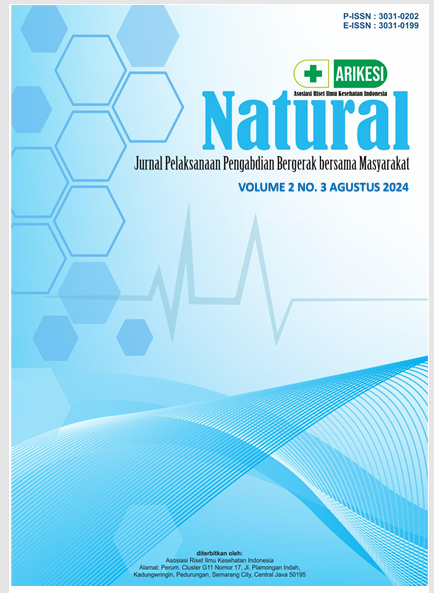Investigating the Effect of Thalassemia on Serum Creatinine, Uric Acid, and Cholesterol Levels
DOI:
https://doi.org/10.61132/natural.v2i3.563Keywords:
Thalassemia, Serum biomarker profile, Clinical implicationsAbstract
A thalassemia is a group of inherited blood disorders characterized by decreased or absent production of hemoglobin. Symptoms of thalassemia vary greatly from patient to patient but may include anemia, fatigue, and susceptibility to infections that can plague their quality of life. Therefore, a detailed evaluation of the serum biomarker profile in thalassemia patients is necessary to elucidate its effects on the body. This study was performed to define the serum biomarker profile. This study aimed to evaluate the serum marker levels among 100 thalassemic patients and compare them with their physiological ranges. Blood urea (B.UREA), serum creatinine (S.CREAT), aspartate aminotransferase (AST), alanine aminotransferase (Alt), alkaline phosphatase (ALP), total serum bilirubin (TSB), serum uric acid (S.U.A), triglycerides (TG), cholesterol (CHOL), albumin (Alb), serum calcium (S.CA) and Carbohydrate Antigen 15-3 (CA15.3) were analyzed comprehensively as key indicators in this study. The test showed that B. UREA's mean number was 24.33±0.8805, which was safe within normal limits. So, no abnormal results were found for this indicator in our tests despite the fact that others showed irregularity. The means of the values measured by S.CREAT, AST, AlT, AlP, TSB, S.U.A, TG, CHOL, AlB, S.CA, and CA15.3 were respectively, 0.8109±0.2007, 28.93±3.325, 26.1±2.698, 101±13.64, 3.261±1.978, 12.78±8.951, 146.8±87.2, 147.5±22.89, 67.94±44.7. This study makes valuable contributions to the field by elucidating the serum biomarkers of individuals with thalassemia and presenting changes in some markers compared to normal levels. However, further research is required in order to investigate the clinical significance of such alterations.2, 9.392±0.4079, and 42.08±7.275.
Downloads
References
Avci, A., Cicek, E., Nacar, A., & Kırbağ, B. (2014). Serum biochemical parameters in beta-thalassemia major. Pediatric Hematology and Oncology, 31(6), 449–453. https://doi.org/10.3109/08880018.2014.898267
Banikarim, C., Salehi, R., Asghari, A., Mohtashami, R., & Kalantar, E. (2012). Biochemical and hematological changes in β-thalassemia major patients. Iranian Journal of Pediatrics, 22(3), 363–370. https://doi.org/10.22038/ijp.2012.3153
Borgna-Pignatti, C. (2011). Thalassemia. In Pediatric Hematology: A Practical Guide (pp. 143-151). Springer.
Borgna-Pignatti, C., & Piga, A. (2017). Thalassemia. In Wintrobe's Clinical Hematology (pp. 453-473). Wolters Kluwer Health.
Kontoghiorghes, G. J., Skordis, N., & Kattamis, A. (2019). Thalassemia and liver disease. Hematology/Oncology and Stem Cell Therapy, 12, 47-53.
Vichinsky, E., Haber, E., & Neumayr, L. D. (2002). Hydroxyurea: A paradigm shift in the treatment of sickle cell anemia. The Journal of Pediatrics, 140(5), 509-516.
Weatherall, D. J., & Clegg, J. B. (2001). The Thalassaemias. Blackwell Science Ltd.
World Health Organization. (2019). Thalassaemia. Retrieved from https://www.who.int/news-room/fact-sheets/detail/thalassaemia.
Downloads
Published
How to Cite
Issue
Section
License
Copyright (c) 2024 Natural: Jurnal Pelaksanaan Pengabdian Bergerak bersama Masyarakat.

This work is licensed under a Creative Commons Attribution-ShareAlike 4.0 International License.





